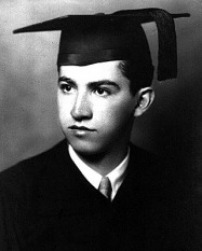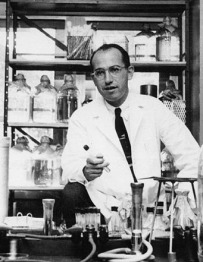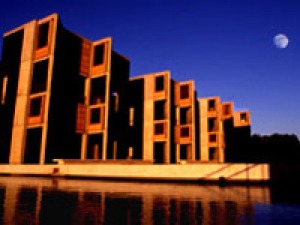"Risks, I like to say, always pay off. You learn what to do or what not to do" ~ Jonas Salk
Early Life

Young Jonas Salk
(Academy of Achievement)
(Academy of Achievement)
Jonas Salk (1914-1995) was interested in medical science and became a doctor. Salk developed a passion for studying viruses in medical school.
Jonas Salk reported in 1947, "I was visited by the Director of Research of the National Foundation of Infantile Paralysis, asking if I would be willing to participate in a program typing polio viruses. I had no experience in working with polio, but this provided me with an opportunity... So, I seized upon that opportunity. It gave me a chance to get funds, to get laboratory facilities, get equipment, and to hire a staff, and to build up something that was not there."
Polio Pioneer

Jonas Salk studied polio from 1947-1955
(Academy of Achievement)
(Academy of Achievement)
From 1947 to 1955, Salk and other researchers found that there were three main polioviruses that infected people. His team could isolate and then kill these viruses with formaldehyde, developing a viable killed-virus vaccine.
Salk first successfully tried his virus on mice and then monkeys. He next tested it on humans, including himself and his young family. Soon nationwide trails were run proving the vaccine successful in preventing polio. Salk became a national hero.
The Salk Institute

Salk Institute Campus at San Diego, California
(Salk Institute)
(Salk Institute)
Jonas Salk continued his research after his development of the polio vaccine. In 1963 he founded the Jonas Salk Institute for Biological Studies, an innovative center for medical and scientific research.
Today 61 faculty investigators along with a scientific staff of more than 850 visiting scientists, postdoctoral fellows, and graduate students conduct biological research at the Salk Institute.